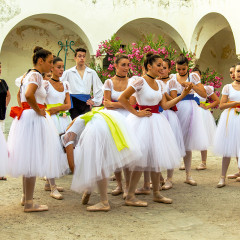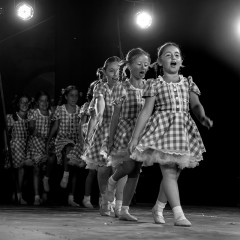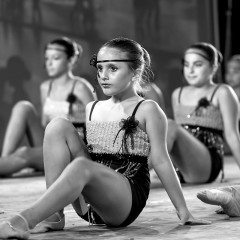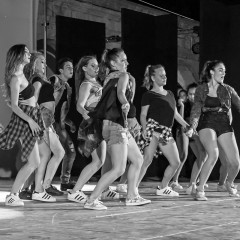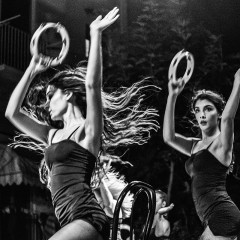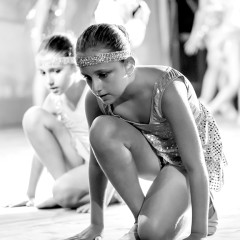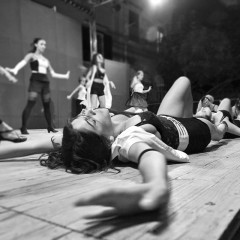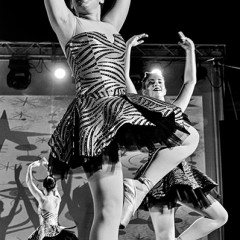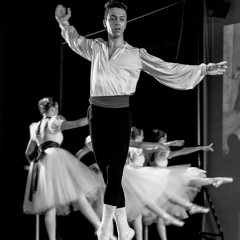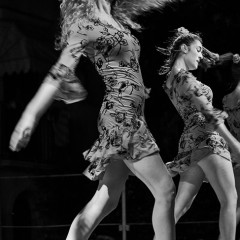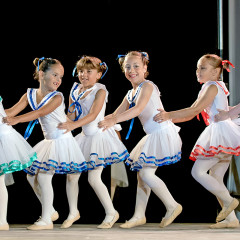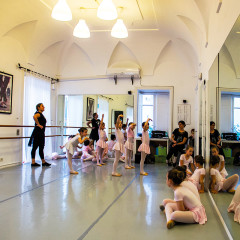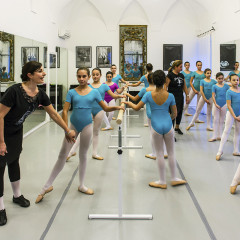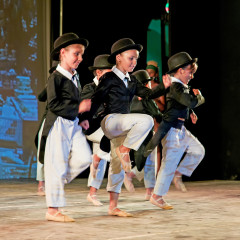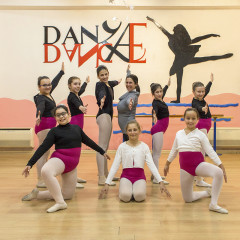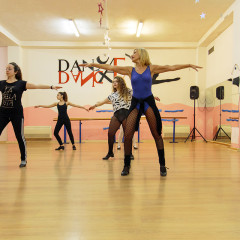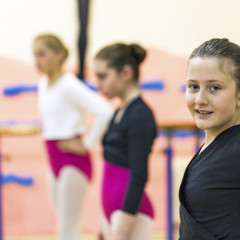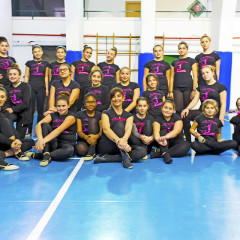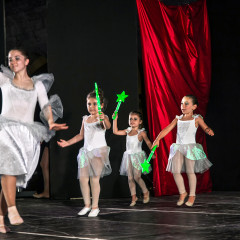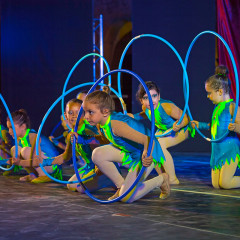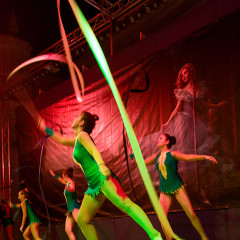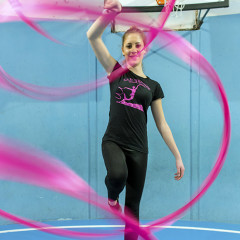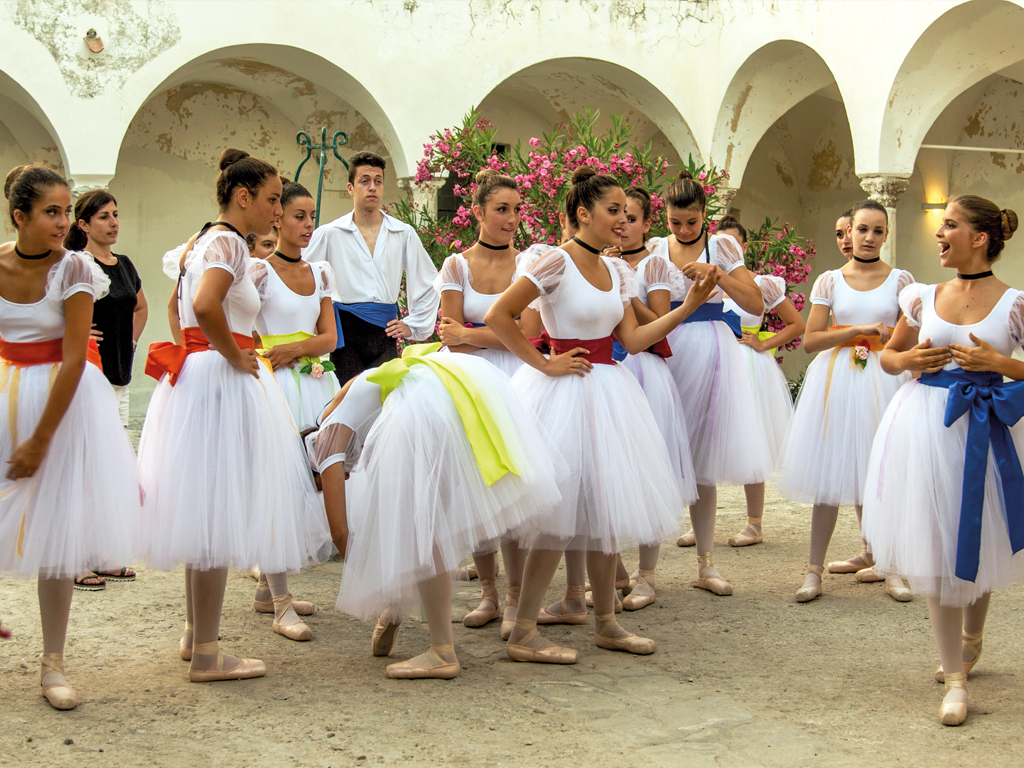
Dance Dance Dance
Classica, moderna o a ritmo di tip-tap. Il ballo a Capri ha una storia antica, fatta di impegno, passione e qualche successo
di Antonella Maresca | foto di Raffaele Lello Mastroianni
Vestiti colorati, nacchere, tamburelli e putipù. Il ballo nella tradizione napoletana è da sempre la tarantella e così anche a Capri, ma su quest’isola porta da sempre un solo nome: “la bella Carmelina”.
La storia vuole che fosse la danzatrice più bella che si sia mai vista. Capelli e occhi corvini, con la sua danza fatta di nacchere e tamburello ammaliava i viandanti che si recavano a visitare le rovine della villa di “Timberio”.
Ora della bella Carmelina rimane soltanto il mito, ma la passione per la sesta arte su quest’isola non ha mai cessato di vivere.
Dopo diversi decenni dalla scomparsa della “bella divulgatrice”, giunse a Capri una coreografa di pattinaggio, dai capelli bianchi e dal portamento elegante, Anne Arcibold, sposata in Gargiulo, che nella sua villa a Matermania decise di aprire una piccola scuola di danza.
«All’inizio per noi era come un sogno, un mondo di fiaba. C’era un salotto enorme con le finestre che lo inondavano di luce, un camino al centro della stanza, un pianoforte e le sbarre ai muri» raccontano Mariapia e Federica Mauro, due delle sue prime allieve. La loro storia inizia così, con questa signora inglese dal sorriso gentile che le ospita nel suo salotto, a soli sei anni, e tutto appariva come un quadro con le ballerine di Degas.
Entrambe ricordano perfettamente la prima volta che videro al teatro San Carlo di Napoli La signora delle Camelie, con Carla Fracci, e di come erano rosse le mani di loro bambine, così intente ad applaudire ciò che le aveva tanto meravigliate.
L’amore per la danza è così, un colpo di fulmine che travolge anima e corpo pur non muovendosi.
Ad appena tredici anni, decidono di approfondire i loro studi al Laine Theatre Arts di Londra, e quando la signora era ormai stanca decidono di continuare a far esistere la danza a Capri. Era il 1991 e nasceva la loro scuola, L’Isola Danza.
Nei loro venticinque anni di attività, compiuti l’anno scorso, ci sono state tante conquiste, come quella di conoscere personalmente Carla Fracci, e vari successi come il primo posto vinto a “Danza in fiera” o l’essere selezionati per il corpo di ballo di Billy Elliot in Campania, il musical di respiro internazionale con le pluripremiate musiche firmate da Elton John.
La loro soddisfazione più grande, però, è quella di essere riuscite a condurre due bambine a diventare delle giovani insegnanti della loro scuola. Simona Petagna e Valentina Boccanfuso ricordano bene i loro primi passi. Simona capisce subito che vuole passare la sua vita a insegnare quella passione che l’aveva travolta, lei che, apparentemente timida, sul palco si trasforma: «Dopo l’imbarazzo iniziale, mi sento me stessa e mi sento proprio bene». Cresciuta nell’Isola Danza da quando aveva sei anni, dopo l’esame diventa l’insegnante di moderno.
Valentina, che invece non ha mai saputo cosa sia l’imbarazzo, si sente completamente a suo agio nell’esibirsi. «Quando ballo divento qualcos’altro» racconta. «Mi libero, non penso a niente. È difficile da descrivere, perché tutto il mondo è fuori». Il suo percorso la porta a lasciare per tre anni Capri per conseguire il diploma all’Accademia di musical di Parma e oggi si sta specializzando in tip-tap. Quando la madre vedendola stanca le dice di cambiare lavoro lei replica senza indugio «non potrei mai, è la mia vita».
Grazie a Mariapia e Federica, L’Isola Danza è diventata una vera e propria famiglia che potrebbe allargarsi per accogliere anche un’altra ballerina cresciuta con loro, Edvige Staiano.
La sua storia con la danza inizia a quattro anni. Irriverente come poche, non portava mai lo chignon, ma ciò non ha mai intaccato il suo talento naturale, che a soli otto anni la conduce al teatro San Carlo di Napoli, in cui studierà fino ai diciotto. La danza è stata una fondamentale compagna della sua crescita e ricorda perfettamente ogni audizione, ogni gioia e ogni piccolo sacrificio dei viaggi tra Napoli e Capri, per quelle ore di danza.
Per lei ogni cosa è risultata semplice, naturale, come salire sulle punte, che definisce “quasi comode”. «Quando ballo sono felice, mi sento come una farfalla e tutto il resto non esiste. Non posso fare altro che sorridere, oltre a ballare».
Il suo momento più emozionante è stato quando si è aperto il sipario del Bolshoi, il teatro di Mosca dove ha avuto l’opportunità di esibirsi in una tarantella napoletana. Ora è sempre alla ricerca di una nuova audizione ma, nel frattempo, studia con Mariapia per diventare anche lei un’insegnante, perché sente di avere qualcosa da trasmettere agli altri.
Sempre negli anni Settanta, nella parte più alta dell’isola, ad Anacapri, un’altra amante della danza, la contessa Benicelli, infondeva passione e talento ad una bambina di quattro anni, un’altra futura ballerina: Marialuisa Iaccarino.
Per lei la danza è una perfetta sinergia di disciplina, lavoro, passione, un’arte sublime da non confondere con lo sport.
Studia all’Ateneo Danza di Forlì. Sono anni di crescita e confronto meraviglioso per lei e questo la porterà, nel 2006, a realizzare il suo sogno, una scuola di danza tutta sua, Danza Dance Capri.
Nei suoi insegnamenti Marialuisa cerca di trasmettere alle allieve che «la danza è l’espressione dell’anima e attraverso il movimento si può esprimere ciò che l’essere umano ha dentro di sé, lì dove non arrivano le parole». Nella sua scuola cerca sempre di dare espressione a diversi tipi di ballo; dal classico, la base di tutto, al moderno, dall’hip-hop al tip-tap fino alle danze caraibiche.
Dopo anni in cui si erano perse, la sua strada si incrocia oggi, con quella di un’altra appasionata di danza, Lia Guercino.
Lia ricorda perfettamente il momento in cui una sua insegnante la prese da parte e le disse che c’era un ballo che faceva per lei. Si trattava del tip-tap e da lì non ha più smesso. Per lei la danza è «usare il proprio corpo come strumento e comunicare o dimenticare tutto quello che c’è oltre il palco». Lia lavora anche come coreografa e talent scout di ballerini per cast televisivi, ma la sua soddisfazione più grande è quella di poter insegnare tip-tap proprio nella scuola di Marialuisa che, un tempo, era una sua allieva.
Sono tante oggi le ragazze che con passione frequentano le scuole di danza capresi. Qualcuna sceglie le punte della danza classica, qualcun’altra il moderno e qualcun’altra ancora decide di cimentarsi con il tip-tap.
E così, mentre d’estate è possibile vederle esibirsi tra Capri e Anacapri cercando di non far dimenticare un’arte antica, chissà se da qualche parte, tra le rovine di Villa Jovis, lo spirito della “bella Carmelina” continui a danzare a piedi nudi in onore del suo imperatore.
Il ritmo della ginnastica
Capri non è fatta solo di danza ma è anche il luogo di discipline olimpioniche come la ginnastica ritmica.
Una ragazza caparbia, sin da piccola appassionata a qualunque tipo di sport, quindici anni fa decide di aprire una scuola di ginnastica ritmica dal nome mitologico: Sirenide. Proprio come le incantatrici del mare, Luana Ruggiero con la sua scuola si propone l’intento di trasmettere alle bambine dell’isola il saper incantare con la musica, con il corpo e con la mente.
Il sogno di insegnare le appartiene da quando era piccina, quando per la prima volta vide il cartone animato Hilary e la protagonista che volteggiava con il suo nastro, innamorandosene. Quando si iscrive all’Isef anni dopo, non c’è alcun dubbio sulla scelta della disciplina in cui specializzarsi: «La nostra insegnate ci fece decidere quale attrezzo utilizzare tra funicella, palla, cerchio, clavette e nastro. La mia scelta fu immediata, scelsi il nastro proprio come Ilary nel cartone animato. Feci l’esame, mi preparai e presi 30».
Oggi sono venticinque anni che insegna e ogni giorno si innamora sempre di più della sua disciplina, colonna fondamentale in tanti momenti belli e brutti della sua vita. Per lei la ginnastica è energia allo stato puro, libertà, vita e ogni giorno cerca di trasmettere questo alle sue ginnaste, facendole diventare delle melodiche e sinuose sirene, proprio come appare da lontano il profilo dell’isola.
Dance Dance Dance
Classical, modern or tap. Dancing has an ancient history on Capri, made up of hard work, passion and some success
by Antonella Maresca | photos by Raffaele Lello Mastroianni
Brightly-coloured clothing, castanets, drums, tambourines and “putipùs”. The traditional Neapolitan dance has always been the tarantella and it’s the same on Capri, but here on the island it has always been known by just one name: “the beautiful Carmelina”. Legend has it that she was the most beautiful dancer ever seen. With her raven-coloured hair and eyes, and her dance using castanets and tambourines, she bewitched the passers-by who came to visit the ruins of the villa of “Timberio”. Now the legend is all that remains of the beautiful Carmelina, but the passion for the art of dance on the island has never ceased to exist. Several decades after the death of this beautiful “celebrity dancer”, an ice-skating choreographer with white hair and elegant bearing arrived on Capri: she was Anne Arcibold, who married into the Gargiulo family, and she decided to open a small dance school in her villa at Matermania. “At first, it was a dream for us, a fairy story. There was an enormous room with windows through which the light flooded in, a fireplace in the centre of the room, a piano, and barres along the walls,” Mariapia and Federica Mauro, two of her first pupils tell me. And that’s how their story started, with this Englishwoman with the kind smile who welcomed the six-year-old girls into her room, where everything was just like one of Degas’s ballerina paintings. Both girls remember perfectly the first time they saw The Lady of the Camellias starring Carla Fracci, at the San Carlo theatre in Naples, and how their small hands became red with clapping, so intent were they on applauding the marvels they had seen. That’s what it’s like to have a passion for dancing: it’s like a bolt of lightning that sweeps away the spirit and body without you moving a step. At just thirteen years old, they decided to continue their studies at the Laine Theatre Arts in London, and when Anne Arcibold grew tired, they decided they would ensure that dancing continued on Capri. It was 1991 and that was the start of their school: L’Isola Danza (the Island Dances). Their 25th anniversary was celebrated last year, and in that time there have been many achievements, such as meeting Carla Fracci in person, and various successes, such as winning first place at the “Danza in fiera” competition, or being selected for the corps de ballet for the production of the internationally famous musical Billy Elliot in Campania, with multi-award-winning music by Elton John. But their biggest satisfaction has been managing to lead two little girls through to becoming young teachers in their school. Simona Petagna and Valentina Boccanfuso well remember their first steps. Simona knew straightaway that she wanted to spend her life teaching that passion that had swept her away, this apparently timid girl that became transformed on stage: “After the initial embarrassment I felt this was the real me and it felt so good.” After growing up with the Isola Danza since the age of six, she passed her exams and has become a teacher of modern dance. Unlike Simona, Valentina never knew the meaning of the word embarrassment, and feels completely at ease when she’s performing. “When I dance, I become something else,” she explains. “I become free, I don’t think about anything. It’s difficult to describe, because everything else remains on the outside.” Her career path took her away from Capri for three years in order to study for the diploma at the Musicals Academy in Parma and now she specializes in tap dancing. When her mother sees how tired she is and tells her she should change her job, she answers without a moment’s hesitation: “I could never do that: it’s my life.” Thanks to Mariapia and Federica, the Isola Danza has become a real family that may extend to include yet another dancer who grew up with them: Edvige Staiano. Her history with dance started at four years old. With her unconventional spirit, she would never wear the dancer’s bun, but that hasn’t impeded her natural talent, which took her at the age of only eight years old to the San Carlo theatre in Naples, where she studied until she was eighteen. Dance was her essential companion as she was growing up, and she remembers perfectly every audition, all the joys and little sacrifices of her trips between Naples and Capri for those hours of dance. For her, everything has been simple and natural, such as going en pointe, which she defines as “almost comfortable”. “When I dance, I feel happy, I feel like a butterfly and nothing else exists. I can’t help smiling as well as dancing.” Her most exciting moment came when the curtain rose at the Bolshoi theatre in Moscow, where she was given the chance to perform a Neapolitan tarantella. Now she’s continually looking for more auditions, but in the meantime she’s studying with Mariapia to become a teacher too, because she feels that she has something to pass on to others. In the 1970s again, in the highest part of the island, at Anacapri, another dance lover, the Countess Benicelli, inspired passion and talent in a four-year-old girl and another future ballerina: Marialuisa Iaccarino. For Marialuisa, dance is a perfect synergy of discipline, work and passion, a sublime art that can’t be confused with sport. She studied at the Ateneo Danza in Forlì. These were years of growth in which she gained wonderful experiences that led her, in 2006, to realize her dream of opening her own dance school: Danza Dance Capri.
In her teaching, Marialuisa tries to convey to her pupils that “dance is the expression of the soul, and through movement you can express what human beings have inside them, down where words can’t reach.” In her school she always tries to give expression to different types of dance; from classical, the foundation of everything, to modern, and from hip-hop to tap and Caribbean dancing. After many years when they lost contact, her path has now crossed again with that of another dance fan, Lia Guercino. Lia remembers perfectly the moment when her teacher took her apart and told her that there was a type of dance that was just right for her. It was tap dancing and she hasn’t stopped ever since. For Lia, dance means “using your own body as a tool, communicating, and forgetting everything that is beyond the stage.” Lia also works as a choreographer and talent scout for dancers for TV shows, but her greatest satisfaction is to be able to teach tap dancing at Marialuisa’s school where she was once a student. There are many girls who attend the Capri dance schools with great enthusiasm nowadays. Some choose classical dancing and en pointe and some modern dance, while others choose to go in for tap dancing. So while you can watch them performing in Capri and Anacapri in the summer, as they try not to let an antique art form become forgotten, perhaps somewhere among the ruins of Villa Jovis, the spirit of the “beautiful Carmelina” still dances on bare feet in honour of her emperor.
The rhythm of gymnastics
Capri is not just a place of dance, but also of Olympic sports such as rhythmic gymnastics.
Fifteen years ago, a headstrong girl who had been a fan of all types of sport as a small child, decided to open a school for rhythmic gymnastics with the mythologically inspired name of Sirenide. With her school, Luana Ruggiero aims to teach the island’s children how to enchant with music, the body and the mind, just like the enchantresses of the sea.
She’s had the dream of teaching ever since she was a child, when for the first time she saw the cartoon Hikari with the star who twirls around with her ribbon, and she fell in love with it. When she enrolled at the Institute of Physical Education (ISEF) years later, she had no doubt about which sport she wanted to specialize in: “Our teacher made us decide what equipment to use from the rope, ball, hoop, clubs and ribbon. I chose straight away: the ribbon, just like Hikari in the cartoon. I sat for the exam, I trained hard and I got top marks.”
Now she’s been teaching for twenty-five years and every day she falls more and more in love with her sport, the mainstay during many good and bad moments of her life. For Lia, gymnastics is energy in its purest state, freedom and life, and every day she tries to pass this onto her gymnasts, making them become melodious and sinuous sirens, like the outline of the island seen from a distance.






